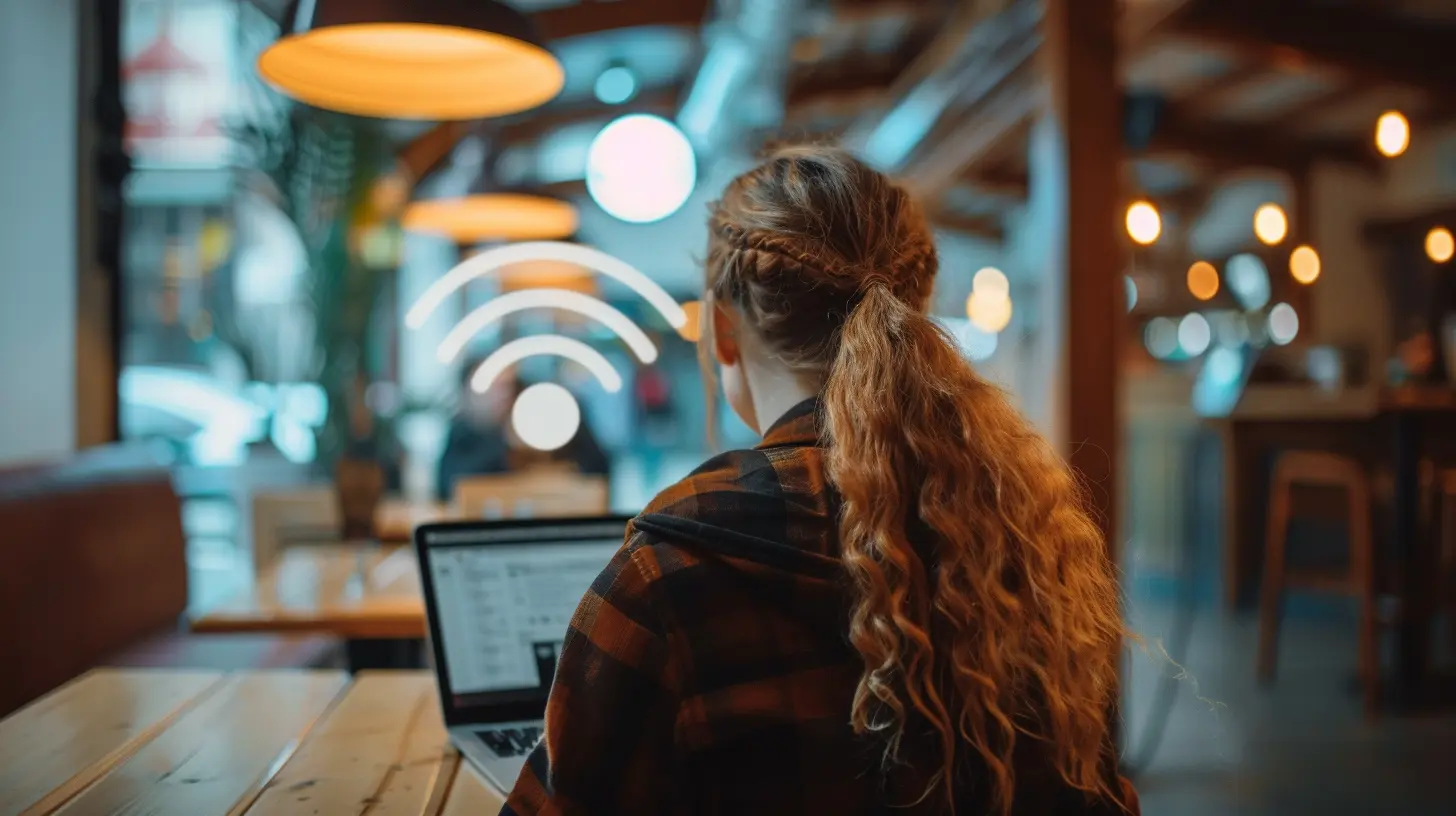Safety Tips for Using Public Wi-Fi to Avoid Cyber Scams
3 November 2025
Ever connected to that free Wi-Fi at the airport, hotel, or your favorite café? Of course, you have—most of us have. It’s fast, it’s free, and it’s right there waiting for you. But here’s the catch: public Wi-Fi is a playground for cybercriminals. One wrong move and poof—your personal data could be in the hands of someone you really don’t want to be sharing it with.
Let’s break it down in plain English, with real-life examples and easy-to-follow advice. This guide will arm you with must-know safety tips for using public Wi-Fi so you can steer clear of cyber scams and enjoy your travels without the digital drama.
Why Public Wi-Fi Is a Cybercrime Hotspot
Imagine public Wi-Fi like an unsecured front door that everyone and their dog can walk through. Yep—it’s that wide open. Unlike your home network, public hotspots rarely require strong passwords or encryption. That’s what makes them so tempting, not just for users but for hackers too.When you jump online at your hotel or airport, your device starts broadcasting signals, and anyone with the right tools (and not-so-great intentions) can eavesdrop on your activity. It’s as if you're having a loud phone convo in a coffee shop—someone nearby might just be taking notes.
Common Cyber Scams on Public Wi-Fi
Before we dive into how to stay safe, let’s look at what we’re up against. Cyber scams on public Wi-Fi aren’t some sci-fi plot—they’re very real and happening every day.1. Man-in-the-Middle Attacks (MitM)
A hacker secretly intercepts the communication between you and the website you’re visiting. So while you think you're logging into your bank, you're actually handing over your details to... a digital thief.2. Fake Wi-Fi Networks
These are evil twins of real public Wi-Fi connections. They have names similar to legitimate networks like “Café_Free_Wi-Fi” instead of “Cafe_Free_WiFi,” but once you connect, they can steal your data or install malware.3. Snooping and Sniffing
Using special software, scammers can monitor everything you do online—yes, everything, from emails to passwords.4. Malware Distribution
Some hackers exploit vulnerabilities in your device to inject malware just by being on the same network. That’s like someone sneezing in your direction and giving your device a digital flu.
Safety Tips for Using Public Wi-Fi to Avoid Cyber Scams
Alright, now that we know the risks, let’s talk about what you can do to protect yourself. The good news? It’s not rocket science. Here’s a list of practical tips and habits that can save you a ton of heartache (and maybe even your identity).1. Always Use a VPN (Virtual Private Network)
A VPN is like a private tunnel that hides your online activity from prying eyes. Even if someone is trying to snoop on you, all they’ll see is encrypted gibberish. It’s your invisibility cloak while online.> 💡 Tip: Not all VPNs are created equal. Go for a reputable paid service—free ones often collect and sell your data.
2. Avoid Accessing Sensitive Information
Logged into your bank account while waiting for your flight? Bad idea. Try to avoid accessing or entering sensitive info like passwords, banking details, or personal accounts while on public networks.If you absolutely must, rely on your mobile data instead or enable that VPN.
3. Turn Off “Auto-Connect” Features
Many devices have a sneaky little default setting that automatically connects to open networks. Turn that off—immediately. You don’t want your phone or laptop hopping onto any sketchy Wi-Fi without your permission.4. Stick to HTTPS Websites
Secure websites begin with "https://". That “S” stands for secure—and yes, it makes a difference. Avoid visiting non-secure websites when using public Wi-Fi. They’re more vulnerable and easier to compromise.> 🔒 Pro Tip: Most modern browsers show a padlock icon in the URL bar. No padlock? Close that tab.
5. Use Two-Factor Authentication (2FA)
Even if your credentials get compromised, 2FA adds an extra layer of protection by requiring a second piece of info (like a code sent to your phone). It's a digital double-check that could save you big time.6. Forget the Network When You Leave
Once you’re done using a public Wi-Fi network, disconnect and “forget” it. This keeps your device from reconnecting automatically in the future—just in case that network was a fake or has been compromised since your last visit.7. Keep Your Software Updated
Updates are your digital armor. They fix known bugs and close vulnerabilities that hackers love to exploit. Always keep your operating system, browsers, and antivirus software up to date.> ✨ Fun Fact: Many cybercrooks rely on people ignoring those pesky update prompts. Don’t make their job easier.
8. Use Firewalls and Antivirus Tools
Enable your device’s firewall and run a reputable antivirus program. These act like your online bodyguards, monitoring traffic and blocking suspicious activity.9. Use a Mobile Hotspot When Possible
When you're traveling, consider using your phone’s mobile hotspot instead of public Wi-Fi. It’s more secure and under your control. Just keep an eye on your data usage, unless you’ve got an unlimited plan.10. Beware of “Login Portals” That Ask for Odd Permissions
Some public Wi-Fi networks have login portals that ask for unusual access—like your email password or Facebook login. That’s a red flag. Never share sensitive credentials on these pages.
Bonus Tips for Travelers
Traveling can make you more vulnerable—you're distracted, moving quickly, and likely to rely on whatever Wi-Fi network you can find. Here are a few extra nuggets of wisdom tailored specifically for globetrotters:🌍 Carry a Travel Router with a VPN
A pocket-sized travel router combined with a VPN can create your own secure network even when plugged into sketchy hotel Ethernet. Digital fortress, anyone?✈️ Download Offline Maps and Travel Info
Instead of logging into public Wi-Fi for directions or bookings, download maps and important info ahead of time. Flight info, hotel details, and subway maps don’t need internet when saved offline.🏨 Ask for Official Network Names
When staying at a hotel or visiting a café, always ask staff for the exact name of their Wi-Fi. Don’t guess. Those evil twins we mentioned earlier thrive on user confusion.What to Do If You Think You've Been Hacked
Oops—you connected to a suspicious network and things feel off. First things first: don’t panic. But don’t ignore it either.1. Disconnect from the Wi-Fi immediately.
2. Clear your browsing history and cache.
3. Run a full antivirus scan on your device.
4. Change your passwords (especially for sensitive accounts like bank or email).
5. Enable 2FA if you haven’t already.
6. Monitor your bank and credit accounts for unusual activity.
If things escalate, don’t hesitate to contact a cybersecurity expert or your local IT support.
Final Thoughts: Stay Smart, Not Sorry
Using public Wi-Fi doesn’t have to be a horror story. With a few smart habits and some basic tools, you can browse safely while sipping your macchiato or waiting at the gate. The internet is full of amazing things—but it’s much better when you don’t have to worry about cyber creeps lurking behind the curtain.So next time you're traveling and tempted by that shiny “Free Wi-Fi” sign, think twice. Ask yourself: do I really need to log in now? If yes, suit up with these safety tips, and you've got nothing to fear.
Stay curious, stay adventurous—but most importantly, stay secure.
all images in this post were generated using AI tools
Category:
Travel ScamsAuthor:

Shane Monroe
Discussion
rate this article
1 comments
Maverick Wheeler
Great tips on staying safe while using public Wi-Fi! It's so important to protect our personal information while traveling. Thanks for highlighting these crucial precautions—now I can enjoy my trips without worrying about cyber scams!
November 4, 2025 at 4:12 AM

Shane Monroe
Thank you for your feedback! I'm glad you found the tips helpful for safer travels. Enjoy your trips!


